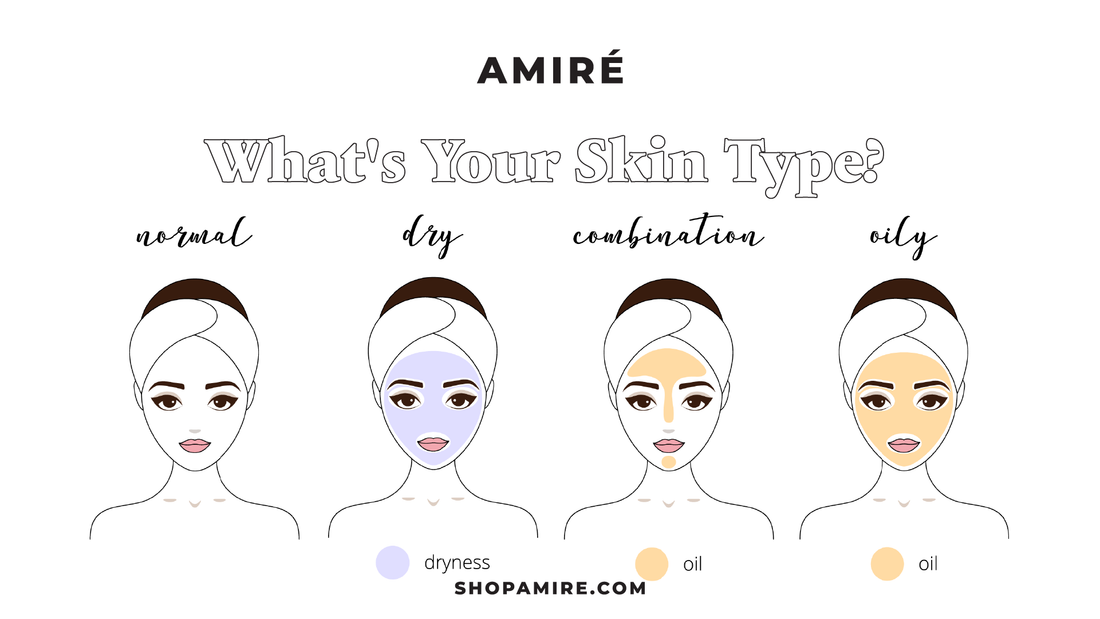Looks like we have a few days left before Daylight Savings starts. This means we’ll be losing an hour of early morning skin routines for our face. Don’t be surprised about any sudden breakouts and skin irritation due to the small loss of sleep, as this yearly ritual is stressful on all skin types, which is the topic of discussion for this week.
All About Skin Types

One of the first things to learn about skincare is determining what skin type you have. A skin type is simply one of at least 5 different categories of shared traits for your skin, dependent on how oily, dry, or sensitive your skin is.
An easy way to figure out what skin type you have is to examine your skin before washing or cleansing. If your skin is very shiny, that’s indicative of oily skin, while cracked and flaky skin is for dry skin. You may have a combination across different parts of your face, or skin that can be considered somewhere in the middle or normal.
Both normal and combination skin are the most common skin types to have. This is because most people will have part of their face be one skin type and another part of their face be something else. This is especially apparent in and around the center of the face, or the T-Zone.
The T-Zone is the part of the face that includes the forehead and brow, nose, and chin areas. These parts of the face are typically more oily due to the larger amount of sebaceous glands which produce the oily, waxy substance called sebum. It also helps to visualize that these areas of the face form a T-shape, hence the term T-Zone.
Your skin will likely not be the same as it was 10 years ago or 10 years from now. Skin types can change for any number of reasons including environmental factors, age, hormones, and quality of health. Normal skin is more prevalent across younger individuals, while older people typically have either dry or oily skin.
Categories of Skin Types
Now, we will go over the five most common skin types to have and how to manage each one. The five skin types are Normal Skin, Oily Skin, Dry Skin, Combination (Combo) Skin, and Sensitive Skin.
Normal skin can easily thought of skin that isn’t too oily or dry, but just right. Even if the T-Zone is a bit more oily than the rest of the skin, there is still a good balance of oil and moisture across the skin. This is not indicative of perfect skin, as those with normal skin focus on maintaining the balance of oil and moisture in their skin and are still subject to acne and skin irritation.
Oily skin is very familiar to most people, since the T-Zone can often be oily after only a couple of hours. Stress and hormones may also lead to an over production of sebum, which is why teenagers are often depicted with oily and acne prone skin. There are a number of ways help manage oily skin, which includes regular face washing, use of gentle cleansers and moisturizers, and avoidance of oil-based cleaners and makeup.
“Dry skin can flake, itch, crack, and even bleed,” according to the American Academy of Dermatology Association. Moisturizers, while helpful, aren’t the only solution to help alleviate dry skin. Using humidifiers will add moisture to dry air and skin. Avoidance of alcohol-based toners and fragrances on your skin will also help as they can irritate and remove moisture from your skin.
Combination skin, or combo skin, is the combination of both dry and oily skin on your face. Certain parts of the face may be more prone to drying out more than others, such as the area between the eyebrows or areas that have facial hair. In this case, a combination of all skin treatments may be suggested along with a well-rounded skincare routine. This could mean using treatments for oily skin on the oily parts of the face and stuff for dry skin on dry parts of the face.
Sensitive skin is the last skin type, and one that hasn’t been discussed much. That is because sensitive skin may develop alongside any other skin type. Management of sensitive skin types involve using products that are generally anti-inflammatory and non-reactive, as well as seeing what products will and won’t react to your skin. What works for one person may not work for another.

